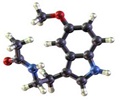A research carried out by Researchers at UT Southwestern Medical Center has shown that a hormone that controls sleep and hunger also activates a protein, HIF-1 that has been known to induce tumour growth. Dr. Thomas Kodadek, chief of translational research at UT Southwestern and senior author of the study said the new research is among the first to show how HIF-1 operates in healthy tissues rather than in tumours.
“HIF-1 is very big in the cancer community. So we were intrigued to find this important and very basic mechanism that is unrelated to cancer,” Dr. Kodadek said. Orexin was already known for its role in sleep and hunger.In the new study, the research team used a massive gene-screening technique to identify genes that orexin either turned on or inhibited. It was discovered that the activity of a component of HIF called HIF1-alpha was among the most highly activated of any gene in the study. And when orexin stimulated HIF1-alpha, it in turn increased the expression of a variety of genes dedicated to burning sugar to provide energy for the body.
Studies in brain slices of mice with and without orexin receptors support the results. Researchers said that the findings help explain orexin’s link to the metabolic system. The body is known to step up its production of orexin when blood sugar gets low. The researchers hypothesized that when a body has low blood sugar and gets hungry, the increase in orexin activates HIF-1 production, revving up metabolism so the body gets the most energy out of the sugar on hand.
Dr. Kodadek said that this action of HIF-1 when stimulated by orexin is different than how it acts in tumours. In tumours, HIF-1 changes cells’ metabolism so they can burn sugar for energy without oxygen. This method is inefficient, but allows cells to stay alive.
Orexin, on contrary, forces HIF-1 to switch cells to burn sugar using oxygen, which burns sugar faster but more efficiently. Researchers said that this strategy makes sense in terms of evolution.
“This orexin pathway we found is basically an overdrive function. Even though blood sugar levels are low, you’re not only awake, but you’re also energetic because of the action of HIF-1. In retrospect, our findings make a lot of sense, but they were surprising at the time,” Dr. Kodadek said.
Advertisement
“If anything, our findings may be a cautionary tale about whether HIF-related mechanisms are going to be appropriate targets for chemotherapy,” Dr. Kodadek said.
Advertisement
Source-ANI
LIN/P











